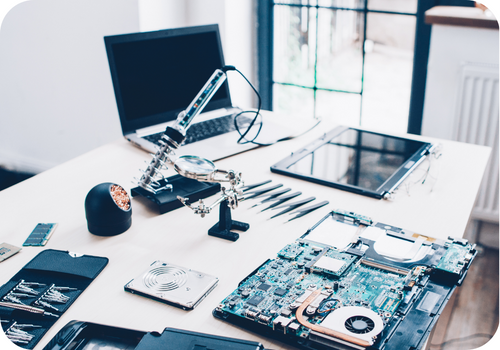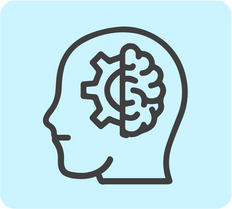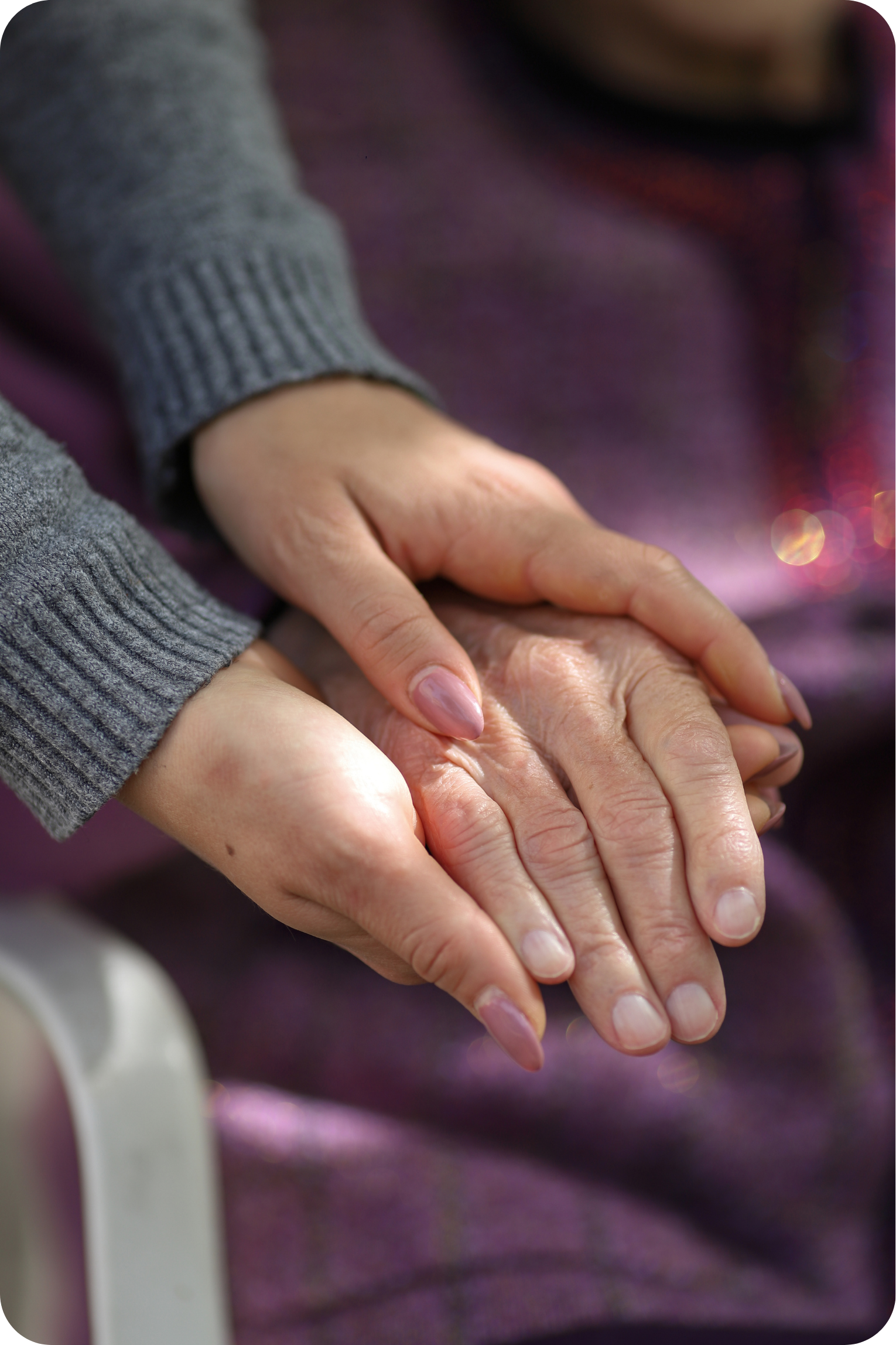Home > Living Well with Dementia > Interventions for Dementia


Interventions for Dementia
Dementia is a multifaceted illness that impacts a range of cognitive functions, including memory, language, problem-solving, and executive functioning.
While there are many medications designed to help manage dementia, there are also non-pharmacological interventions that can help individuals with dementia.
Non-pharmacological interventions are treatments or approaches that do not involve medication.
Some examples of non-pharmacological interventions include reminiscence therapy[1], multisensory stimulation, Play Intervention for Dementia[2], music therapy[3] and art therapy[4], among others.
These interventions can provide opportunities for social connection, slow cognitive decline, and enhance the quality of life for individuals with dementia.
The following sections will highlight different non-pharmacological interventions and how they may help individuals with dementia.

Interventions for Dementia
Dementia is a multifaceted illness that impacts a range of cognitive functions, including memory, language, problem-solving, and executive functioning.
While there are many medications designed to help manage dementia, there are also non-pharmacological interventions that can help individuals with dementia.
Non-pharmacological interventions are treatments or approaches that do not involve medication.
Some examples of non-pharmacological interventions include reminiscence therapy[1], multisensory stimulation, Play Intervention for Dementia[2], music therapy[3] and art therapy[4], among others.
These interventions can provide opportunities for social connection, slow cognitive decline, and enhance the quality of life for individuals with dementia.
The following sections will highlight different non-pharmacological interventions and how they may help individuals with dementia.
Interventions for Dementia
Reminiscence Therapy
Reminiscence therapy, or life review, encourages individuals with dementia to talk about their past experiences and special moments.
By recalling past events and memories, reminiscence therapy helps to stimulate parts of the brain that maintain long-term memory and cognition. [5]
Benefits and Impacts
- Improves cognitive and sensory functioning. [6] [7] [8] [9]
- Enhances quality of life for individuals with dementia. [11] [12]
- Decreases depressive and neuropsychiatric symptoms, especially in long-term care settings. [11] [12]
Useful Resources
Learn more about reminiscence therapy and dementia:
- Alzheimer Society of Canada: Finding suitable activities – Reminders of the past
- Dementia UK: Meaningful activities part four: Reminiscence.
- Elder Care Alliance: Benefits of reminiscence therapy.
- Jockey Club Post-diagnostic Support in Dementia Care Programme: Reminiscence Therapy.
- Cognitive Training for Seniors: In-home Reminiscence Therapy: Improve memory and mood; slow cognitive decline. (Chinese)
Multisensory Stimulation
Multisensory stimulation is a common non-pharmacological treatment for dementia. [10]
This method involves creating an environment that has various sensory stimuli (such as different lighting, tactile surfaces, music, scents, etc.) to stimulate a person’s vision, hearing, touch, smell and taste. [11]
Benefits and Impacts
- Can be provided in the home environment easily and accessibly. [12]
- Improves the mood of individuals with dementia in short-term and enhances overall quality of life. [13]
- Strengthens relationships between individuals with dementia and their caregivers as caregivers could feel stronger connections with them. [14]
Useful Resources
Learn more about the Cognitive Stimulation Therapy program:
Play Intervention for Dementia (PID)
Play Intervention for Dementia (PID) is a program developed under the Strategies & Skills Learning & Development (SSLD) System.[15]
PID aims to help individuals with dementia have enjoyable social interactions and enhance their cognitive capacities through engaging in games and activities.
PID can be facilitated in large groups, small groups, or one-to-one settings. PID activities are diverse and can include physical movements, music, group games, and arts and crafts.
Benefits and Impacts
- Improves cognitive abilities, including but not limited to memory retainment, numerical skills, and abstract thinking. [16]
- Improves self-esteem, engagement, and motivation levels for individuals with dementia.
- Enhances mood and emotional well-being, [17] as well as improving capacity for self-expression and interpersonal relationships.
Useful Resources
Watch these videos to learn more about the PID program:
- Yee Hong: Play Intervention for Dementia (PID) at Yee Hong (Cantonese)
- Online course: Lesson 3 – Applications in Daily Life: Play Intervention for Dementia (PID) Introduction
- Yee Hong: Play Intervention for Dementia – Caregiver Resources. (Mandarin with Simplified Chinese subtitles)
- SPIRE: Strategies & Skills Learning & Development (SSLD) System
- Yan Oi Tong: Through non-pharmacological interventions, will seniors with dementia make good changes? Yan Oi Tong YES (Cantonese)
- Training Institute “Play Intervention for Dementia” Training Workshop. (Cantonese)
Music Therapy
Music therapy is an intervention where a music therapist helps participants express themselves and interact with others by using music and its elements. [18]
Music therapy can serve as an alternative form of connection for individuals with dementia who experience communication difficulties. [19]
There are two types of music therapy: active music therapy and passive music therapy.
Active music therapy involves participants in singing, playing instruments or writing lyrics.
Passive music therapy involves participants listening to music selected by the therapist. [20]
Benefits and Impacts
- Improves cognitive abilities in the areas of language function, orientation, and memory. [21] [22]
- Reduces behavioural and psychological symptoms of dementia, including agitation. [23] [24]
- Can facilitate socialization and help foster meaningful relationships. [25]
Useful Resources
Learn more about music therapy in Alzheimer’s and dementia care:
- Alzheimer Society Toronto: The Music Project (They have music selections in Chinese)
- Music Heals: Music Therapy in Alzheimer and Dementia Care
- Hong Kong Sheng Kung Hui Welfare Council: “Power of Music”: Kitchen Tools X Oldies – Music therapy improves seniors’ cognitive and social abilities. (Cantonese)
- Department of Health, New Taipei City Government: Wandering, delusions, hallucinations – psychological and behavioural symptoms of dementia 3: Music Therapy. (Mandarin)
Find a certified music therapist in Canada:
Art Therapy
Art therapy allows individuals with dementia to express their thoughts and feelings through creative activities and processes such as making crafts, painting, and drawing. [26] [27]
Participants do not need to have experience or skills in art to participate or benefit from art therapy. [28]
The primary goal of art therapy is to help participants express their thoughts, feelings, emotions, and experiences.
Benefits and Impacts
- Provides an alternative method of communication and self-expression for individuals with dementia.
- Improves self-esteem and fosters a sense of accomplishment. [25]
- Improves well-being and quality of life for individuals with dementia. [29]
Useful Resources
Find an art therapist in Canada.
Horticultural Therapy
Horticultural therapy is an intervention that helps people living with dementia manage their symptoms through connection and exposure to plants and natural environments.
The therapy is often led by a registered horticultural therapist and focuses on nature, exercise, and socialization.
There are two types of horticulture therapy: active horticultural therapy and passive horticultural therapy.
Active horticultural therapy involves engaging in hands-on gardening work.
Passive horticultural therapy involves viewing and being surrounded by a garden environment [30]
Benefits and Impacts
- Reduces agitated behavior and alleviates depression symptoms. [31]
- Enhances social interactions among individuals with dementia. [31]
- Increases sense of achievement for individuals with dementia. [32]
Useful Resources
Learn more about the benefits of horticulture for individuals with dementia.

Interventions for Dementia
Reminiscence Therapy
Reminiscence therapy, or life review, encourages individuals with dementia to talk about their past experiences and special moments.
By recalling past events and memories, reminiscence therapy helps to stimulate parts of the brain that maintain long-term memory and cognition. [5]
Benefits and Impacts
- Improves cognitive and sensory functioning. [6] [7] [8] [9]
- Enhances quality of life for individuals with dementia. [11] [12]
- Decreases depressive and neuropsychiatric symptoms, especially in long-term care settings. [11] [12]
Useful Resources
Learn more about reminiscence therapy and dementia:
- Alzheimer Society of Canada: Finding suitable activities – Reminders of the past
- Dementia UK: Meaningful activities part four: Reminiscence.
- Elder Care Alliance: Benefits of reminiscence therapy.
- Jockey Club Post-diagnostic Support in Dementia Care Programme: Reminiscence Therapy.
- Cognitive Training for Seniors: In-home Reminiscence Therapy: Improve memory and mood; slow cognitive decline. (Chinese)
Multisensory Stimulation
Multisensory stimulation is a common non-pharmacological treatment for dementia. [10]
This method involves creating an environment that has various sensory stimuli (such as different lighting, tactile surfaces, music, scents, etc.) to stimulate a person’s vision, hearing, touch, smell and taste. [11]
Benefits and Impacts
- Can be provided in the home environment easily and accessibly. [12]
- Improves the mood of individuals with dementia in short-term and enhances overall quality of life. [13]
- Strengthens relationships between individuals with dementia and their caregivers as caregivers could feel stronger connections with them. [14]
Useful Resources
Learn more about the Cognitive Stimulation Therapy program:
Play Intervention for Dementia (PID)
Play Intervention for Dementia (PID) is a program developed under the Strategies & Skills Learning & Development (SSLD) System.[15]
PID aims to help individuals with dementia have enjoyable social interactions and enhance their cognitive capacities through engaging in games and activities.
PID can be facilitated in large groups, small groups, or one-to-one settings. PID activities are diverse and can include physical movements, music, group games, and arts and crafts.
Benefits and Impacts
- Improves cognitive abilities, including but not limited to memory retainment, numerical skills, and abstract thinking. [16]
- Improves self-esteem, engagement, and motivation levels for individuals with dementia.
- Enhances mood and emotional well-being, [17] as well as improving capacity for self-expression and interpersonal relationships.
Useful Resources
Watch these videos to learn more about the PID program:
- Yee Hong: Play Intervention for Dementia (PID) at Yee Hong (Cantonese)
- Online course: Lesson 3 – Applications in Daily Life: Play Intervention for Dementia (PID) Introduction
- Yee Hong: Play Intervention for Dementia – Caregiver Resources. (Mandarin with Simplified Chinese subtitles)
- SPIRE: Strategies & Skills Learning & Development (SSLD) System
- Yan Oi Tong: Through non-pharmacological interventions, will seniors with dementia make good changes? Yan Oi Tong YES (Cantonese)
- Training Institute “Play Intervention for Dementia” Training Workshop. (Cantonese)
Music Therapy
Music therapy is an intervention where a music therapist helps participants express themselves and interact with others by using music and its elements. [18]
Music therapy can serve as an alternative form of connection for individuals with dementia who experience communication difficulties. [19]
There are two types of music therapy: active music therapy and passive music therapy.
Active music therapy involves participants in singing, playing instruments or writing lyrics.
Passive music therapy involves participants listening to music selected by the therapist. [20]
Benefits and Impacts
- Improves cognitive abilities in the areas of language function, orientation, and memory. [21] [22]
- Reduces behavioural and psychological symptoms of dementia, including agitation. [23] [24]
- Can facilitate socialization and help foster meaningful relationships. [25]
Useful Resources
Learn more about music therapy in Alzheimer’s and dementia care:
- Alzheimer Society Toronto: The Music Project (They have music selections in Chinese)
- Music Heals: Music Therapy in Alzheimer and Dementia Care
- Hong Kong Sheng Kung Hui Welfare Council: “Power of Music”: Kitchen Tools X Oldies – Music therapy improves seniors’ cognitive and social abilities. (Cantonese)
- Department of Health, New Taipei City Government: Wandering, delusions, hallucinations – psychological and behavioural symptoms of dementia 3: Music Therapy. (Mandarin)
Find a certified music therapist in Canada:
Art Therapy
Art therapy allows individuals with dementia to express their thoughts and feelings through creative activities and processes such as making crafts, painting, and drawing. [26] [27]
Participants do not need to have experience or skills in art to participate or benefit from art therapy. [28]
The primary goal of art therapy is to help participants express their thoughts, feelings, emotions, and experiences.
Benefits and Impacts
- Provides an alternative method of communication and self-expression for individuals with dementia.
- Improves self-esteem and fosters a sense of accomplishment. [25]
- Improves well-being and quality of life for individuals with dementia. [29]
Useful Resources
Find an art therapist in Canada.
Horticultural Therapy
Horticultural therapy is an intervention that helps people living with dementia manage their symptoms through connection and exposure to plants and natural environments.
The therapy is often led by a registered horticultural therapist and focuses on nature, exercise, and socialization.
There are two types of horticulture therapy: active horticultural therapy and passive horticultural therapy.
Active horticultural therapy involves engaging in hands-on gardening work.
Passive horticultural therapy involves viewing and being surrounded by a garden environment [30]
Benefits and Impacts
- Reduces agitated behavior and alleviates depression symptoms. [31]
- Enhances social interactions among individuals with dementia. [31]
- Increases sense of achievement for individuals with dementia. [32]
Useful Resources
Learn more about the benefits of horticulture for individuals with dementia.

Technology-based Interventions for Dementia Care
The alarming incline in the global prevalence of dementia presents a pressing challenge for healthcare systems and communities worldwide.[33] Fortunately, the use of technology in healthcare has paved the way for a new era of support and assistance for individuals living with dementia.
Technology-based interventions, like Virtual Reality for Seniors (VRS), robotic pets and HippoCamera, provide opportunities for cognitive stimulation and enhance the quality of life for both individuals with dementia and caregivers. In this era of innovation, technology not only offers assistance but also instills hope for a brighter future for those facing dementia’s challenges.
Virtual Reality for Seniors (VRS)
Virtual reality (VR) is a form of computer simulation technology that enables users to interact with a virtual world. This innovative approach offers older adults an opportunity to engage with interactive games and experiences, fostering enjoyment and cognitive stimulation.[34]
Beyond individual engagement, VR can also facilitate social interaction as participants share their virtual experiences to build new connections and strengthen community ties.
The benefits and impacts of VR go beyond entertainment. Studies indicate its potential to enhance cognitive functioning, improve sensory and motor capabilities, and serve as a valuable memory exercise, particularly for individuals with dementia.[35] [36].
Furthermore, by serving as a platform for shared experiences and fostering social interactions, VR can be a tool for personal enrichment as well as a catalyst for building meaningful connections[37] and promoting holistic well-being among seniors.[38]
Useful Resources
Robotic Pets
Studies show loneliness, often referred to as social isolation, is a significant health concern that has been linked to a 50% increased risk of developing dementia.[39] Robotic pets have emerged as a promising solution to combat loneliness among older adults, including those living with Alzheimer’s disease and related dementias (ADRD).
Robotic pets are designed to mimic the behaviour of real pets. Research indicates that these artificially intelligent companions offer tangible benefits in alleviating feelings of isolation and providing comfort to individuals experiencing loneliness.
Robotic pet therapy is a holistic and innovative approach to improving overall well-being and quality of life for individuals with cognitive impairment. While robotic pets do not cure dementia or Alzheimer’s, research shows they play a role in reducing depression and feelings of loneliness among older adults with cognitive impairment.[40]
Additionally, the benefits of robotic pet therapy extend beyond emotional support, with studies suggesting that these companions can help stave off ADRD, mitigate associated behavioural issues such as anxiety and agitation, and provide engaging experiences.[41]
Useful Resources
- Pacific Neuroscience Institute: Robotic Pets Provide Comfort to Dementia Patients
- National Library of Medicine: The Utilization of Robotic Pets in Dementia Care
- KMSP FOX 9: Robotic pets used to help dementia patients (Video)
- VICE News: Robotic Pets Are Helping Dementia Patients (HBO) (video)
- Daily Mail: Robot baby seal ‘Paro’ helps elderly dementia patients in Hong Kong (video)
- Science Daily: Cat’s meow: Robotic pet boosts mood, behavior and cognition in adults with dementia
- Gerontechnology Platform: Trendmaster Toy therapeutic digital pets (Chinese)
HippoCamera
HippoCamera is a smartphone application developed by researchers at the University of Toronto in 2015.
Inspired by the hippocampus, the brain’s memory hub, HippoCamera mimics this brain region’s functions in retrieving and preserving memories of past events[42] by allowing the user to record and store short video clips of significant life moments. When the user rewatches their video clips through HippoCamera, the app helps them reinforce these memories, effectively enhancing the user’s episodic memory.[43]
This smartphone application utilizes well-established principles from the science of learning and memory to encourage users to capture and revisit important life moments. Through extensive lab-based studies and international field trials, HippoCamera has been shown to significantly increase memory retrieval for the unique details of these events by over 50%.[44]
These enriched memories have remarkable longevity, persisting for months beyond the typical forgetting period. The heightened neural activity induced by HippoCamera in the hippocampus contributes to reduced memory overlap, resulting in distinct and vivid recollections.
Useful Resources
Watch this video to learn more about improving memory recall with HippoCamera:
- University of Toronto: Improving memory recall with HippoCamera app (video with English subtitles)
Learn more about how HippoCamera works:
Learn more about memory loss and how HippoCamera aids in memory storage and recall:

Technology-based Interventions for Dementia Care
The alarming incline in the global prevalence of dementia presents a pressing challenge for healthcare systems and communities worldwide.[33] Fortunately, the use of technology in healthcare has paved the way for a new era of support and assistance for individuals living with dementia.
Technology-based interventions, like Virtual Reality for Seniors (VRS), robotic pets and HippoCamera, provide opportunities for cognitive stimulation and enhance the quality of life for both individuals with dementia and caregivers. In this era of innovation, technology not only offers assistance but also instills hope for a brighter future for those facing dementia’s challenges.
Virtual Reality for Seniors (VRS)
Virtual reality (VR) is a form of computer simulation technology that enables users to interact with a virtual world. This innovative approach offers older adults an opportunity to engage with interactive games and experiences, fostering enjoyment and cognitive stimulation.[34]
Beyond individual engagement, VR can also facilitate social interaction as participants share their virtual experiences to build new connections and strengthen community ties.
The benefits and impacts of VR go beyond entertainment. Studies indicate its potential to enhance cognitive functioning, improve sensory and motor capabilities, and serve as a valuable memory exercise, particularly for individuals with dementia.[35] [36].
Furthermore, by serving as a platform for shared experiences and fostering social interactions, VR can be a tool for personal enrichment as well as a catalyst for building meaningful connections[37] and promoting holistic well-being among seniors.[38]
Useful Resources
Robotic Pets
Studies show loneliness, often referred to as social isolation, is a significant health concern that has been linked to a 50% increased risk of developing dementia.[39] Robotic pets have emerged as a promising solution to combat loneliness among older adults, including those living with Alzheimer’s disease and related dementias (ADRD).
Robotic pets are designed to mimic the behaviour of real pets. Research indicates that these artificially intelligent companions offer tangible benefits in alleviating feelings of isolation and providing comfort to individuals experiencing loneliness.
Robotic pet therapy is a holistic and innovative approach to improving overall well-being and quality of life for individuals with cognitive impairment. While robotic pets do not cure dementia or Alzheimer’s, research shows they play a role in reducing depression and feelings of loneliness among older adults with cognitive impairment.[40]
Additionally, the benefits of robotic pet therapy extend beyond emotional support, with studies suggesting that these companions can help stave off ADRD, mitigate associated behavioural issues such as anxiety and agitation, and provide engaging experiences.[41]
Useful Resources
- Pacific Neuroscience Institute: Robotic Pets Provide Comfort to Dementia Patients
- National Library of Medicine: The Utilization of Robotic Pets in Dementia Care
- KMSP FOX 9: Robotic pets used to help dementia patients (Video)
- VICE News: Robotic Pets Are Helping Dementia Patients (HBO) (video)
- Daily Mail: Robot baby seal ‘Paro’ helps elderly dementia patients in Hong Kong (video)
- Science Daily: Cat’s meow: Robotic pet boosts mood, behavior and cognition in adults with dementia
- Gerontechnology Platform: Trendmaster Toy therapeutic digital pets (Chinese)
HippoCamera
HippoCamera is a smartphone application developed by researchers at the University of Toronto in 2015.
Inspired by the hippocampus, the brain’s memory hub, HippoCamera mimics this brain region’s functions in retrieving and preserving memories of past events[42] by allowing the user to record and store short video clips of significant life moments. When the user rewatches their video clips through HippoCamera, the app helps them reinforce these memories, effectively enhancing the user’s episodic memory.[43]
This smartphone application utilizes well-established principles from the science of learning and memory to encourage users to capture and revisit important life moments. Through extensive lab-based studies and international field trials, HippoCamera has been shown to significantly increase memory retrieval for the unique details of these events by over 50%.[44]
These enriched memories have remarkable longevity, persisting for months beyond the typical forgetting period. The heightened neural activity induced by HippoCamera in the hippocampus contributes to reduced memory overlap, resulting in distinct and vivid recollections.
Useful Resources
Watch this video to learn more about improving memory recall with HippoCamera:
- University of Toronto: Improving memory recall with HippoCamera app (video with English subtitles)
Learn more about how HippoCamera works:
Learn more about memory loss and how HippoCamera aids in memory storage and recall:
Ideas for At-home Activities
Caregivers are encouraged to do regular physical, social, and cognitively stimulating activities with individuals with dementia at home. Doing so can help individuals with dementia remain socially active at home and foster stronger relationships between them and their caregivers.
Here are some ideas for at-home activities:

Physical Exercise Activities
- Perform gentle stretching exercises to promote muscle flexibility.
- Engage in balance and coordination training, like walking in a straight line or playing with a balance ball.
- Lead mild aerobic exercises, such as walking or gentle skipping, to enhance cardiovascular health.
- Learn more physical exercise activities in the Activities to Enjoy Together! Section.

Cognitive Activities
- Based on the individual’s interests, cognitive abilities, and limitations to arrange activities.
- Engage in cognitive activities with individuals, such as doing puzzles, playing card games, and board games.
- Explore materials available at home that can enhance cognitive abilities through daily activities or household chores, such as sorting socks and folding hand towels.
- Utilize available materials that have strong contrast in color and bigger font size.
- Remember, the objective is not about the individual’s success or failure in an activity but the engagement of the individual.
- Learn more at-home activities in the Activities to Enjoy Together! Section.

Social Activities
- Host small gatherings or invite family and friends over for casual social interactions.
- Go for a walk together in a nearby park or around the neighbourhood.
- Invite individuals with dementia to share their past experiences or stories using photos or music as prompts.
- Participate in activities together, such as watching movies, playing card games and listening to music.

Multi-Sensory Stimulation Activities
- Visual stimulation: Play videos of nature scenes or engage in art activities together, such as painting or doodling.
- Auditory stimulation: Play soft music, such as meditation music, or nature sounds, such as ocean waves or birds chirping.
- Tactile stimulation: Provide materials with different textures for them to touch (such as silk, wood, feathers, etc.) and ask them to identify the materials.
- Olfactory (smell) stimulation: Prepare various scents (such as essential oils, flowers, spices, etc.) and ask them to identify the different smells.
- Gustatory (taste) stimulation: Prepare different flavoured foods, teas or drinks for individuals with dementia to stimulate their taste.
Remember to tailor activities to the specific needs, interests, and abilities of the individual with dementia.
- Choose appropriate activities and adjust difficulty levels based on their capabilities.
- The key is to not only stimulate cognitive functions, but also provide enjoyable social and entertainment experiences, ultimately improving their quality of life.
Tips for Caregivers
Caregivers play an important role in facilitating and encouraging engagement in non-pharmacological treatments.
Assisting individuals with dementia to participate in these activities requires patience, creativity, and an understanding of the individual’s needs and preferences.
Here are some tips for facilitating non-pharmacological interventions:

01: Select appropriate activities
Start by understanding the individual’s interests, preferences, cognitive abilities, and limitations. This can help when selecting or tailoring activities to meet the individual’s unique needs. Try activities like puzzles, music, art, gardening, reading, or other activities the person enjoys.
02: Simplify larger activities
Break down complex activities into smaller, manageable steps. This makes the activities less overwhelming and helps the individual develop a sense of accomplishment when tasks are completed successfully.
03: Create a comfortable environment
Ensure that the chosen activity takes place in a safe and comfortable environment. This may involve setting up appropriate lighting, providing comfortable seating, and eliminating distractions, such as reducing background noise by turning off the television or radio.
04: Set realistic expectations
Set realistic goals for the activity and adjust expectations based on the individual’s abilities. The focus should be on the process and enjoying the activity rather than achieving a specific outcome.
05: Use cues and demonstrations
Consider using visual cues, gestures, and simple instructions to guide the individual through the activity. Verbal encouragement and positive reinforcement can also be motivating and encourage continued participation. Step-by-step demonstrations can also be helpful.
06: Provide hands-on assistance
Offer assistance when needed, especially for tasks that may be challenging for the individual due to cognitive impairments or limited motor skills.
07: Be flexible and offer choices
It is important to remain flexible and adaptable. If the individual shows signs of frustration or disinterest, it is important to adjust the activity or try something else. It is also important to provide choices within the activity to give the individual autonomy and a sense of control.


08: Create a routine
Incorporating activities into a daily routine helps establish a sense of predictability and familiarity, making it easier for individuals with dementia to engage. A routine and structured environment can reduce confusion and feelings of anxiety.
09: Maintain a positive attitude
Maintaining a positive and patient attitude throughout the activity is important in creating a beneficial experience for the individual. Your enthusiasm and encouragement can influence the individual’s willingness to participate in the activities.
10: Document progress
Observing and documenting the individual’s engagement and progress in different activities can help you identify which activities are most enjoyable and effective over time.
11: Encourage social interaction
Feel free to participate in or interact with the individual during the activities. Social interactions can enhance the individual’s overall engagement, emotional well-being, and lead to more positive outcomes.

Tips for Caregivers
Caregivers play an important role in facilitating and encouraging engagement in non-pharmacological treatments.
Assisting individuals with dementia to participate in these activities requires patience, creativity, and an understanding of the individual’s needs and preferences.
Here are some tips for facilitating non-pharmacological interventions:

01: Select appropriate activities
Start by understanding the individual’s interests, preferences, cognitive abilities, and limitations. This can help when selecting or tailoring activities to meet the individual’s unique needs. Try activities like puzzles, music, art, gardening, reading, or other activities the person enjoys.
02: Simplify larger activities
Break down complex activities into smaller, manageable steps. This makes the activities less overwhelming and helps the individual develop a sense of accomplishment when tasks are completed successfully.
03: Create a comfortable environment
Ensure that the chosen activity takes place in a safe and comfortable environment. This may involve setting up appropriate lighting, providing comfortable seating, and eliminating distractions, such as reducing background noise by turning off the television or radio.
04: Set realistic expectations
Set realistic goals for the activity and adjust expectations based on the individual’s abilities. The focus should be on the process and enjoying the activity rather than achieving a specific outcome.
05: Use cues and demonstrations
Consider using visual cues, gestures, and simple instructions to guide the individual through the activity. Verbal encouragement and positive reinforcement can also be motivating and encourage continued participation. Step-by-step demonstrations can also be helpful.
06: Provide hands-on assistance
Offer assistance when needed, especially for tasks that may be challenging for the individual due to cognitive impairments or limited motor skills.
07: Be flexible and offer choices
It is important to remain flexible and adaptable. If the individual shows signs of frustration or disinterest, it is important to adjust the activity or try something else. It is also important to provide choices within the activity to give the individual autonomy and a sense of control.
08: Create a routine
Incorporating activities into a daily routine helps establish a sense of predictability and familiarity, making it easier for individuals with dementia to engage. A routine and structured environment can reduce confusion and feelings of anxiety.
09: Maintain a positive attitude
Maintaining a positive and patient attitude throughout the activity is important in creating a beneficial experience for the individual. Your enthusiasm and encouragement can influence the individual’s willingness to participate in the activities.
10: Document progress
Observing and documenting the individual’s engagement and progress in different activities can help you identify which activities are most enjoyable and effective over time.
11: Encourage social interaction
Feel free to participate in or interact with the individual during the activities. Social interactions can enhance the individual’s overall engagement, emotional well-being, and lead to more positive outcomes.
Useful Resources
Explore the following resources to find more information on non-pharmacological interventions that can support individuals with dementia.
- Alzheimer Society of Canada: Alternative treatments for dementia
- Alzheimer Society of Canada: A few tips on art, creativity and dementia
- Hong Kong Jockey Club Post-diagnostic Support in Dementia Care Programme: Alternative Therapies.
- Smart Patient: Non-medical Treatment.
- Hong Kong Hospital Authority: Memory Gas Station. (Chinese)
- Hong Kong Hospital Authority: Caregiver Handbook for Dementia. (Chinese)
Learn more about different activities and programs.
- Alzheimer Society Toronto’s Active Living Program: Enhances social inclusion and physical well-being for people with dementia and their care partners through creative therapies.
- Alzheimer Society Music Project: Provides MP3 players loaded with personalized music to people living with dementia. Listening to personalized music has the potential to increase physical and social activity, reignite older memories, and improve overall quality of life.
- Alzheimer Society Toronto’s Teleconnect program: Offers outreach and check-in calls to support socially isolated caregivers and people living with dementia.
- Alzheimer Society Toronto’s The Active Minds Club: An adult day program for people living with young onset dementia. This program provides recreational, cognitive, and social stimulation for individuals with dementia while extending respite opportunities for caregivers.
- Alzheimer Society of British Columbia: Minds in Motion®
- Root in Nature: Offers programs to connect people through nature and plants while improving the sleep and cognitive abilities of individuals with dementia.
References
1 Saragih, I. D., Tonapa, S. I., Yao, C., Saragih, I. S., & Lee, B. (2022). Effects of reminiscence therapy in people with dementia: A systematic review and meta‐analysis. Journal of Psychiatric and Mental Health Nursing, 29(6), 883–903. https://doi.org/10.1111/jpm.12830
2 Cheung, D. S. K., Li, B., Lai, D. W. L., Leung, A. Y. M., Yu, C. T. K., & Tsang, K. T. (2019). Cognitive stimulating play intervention for dementia: A feasibility randomized controlled trial. American Journal of Alzheimer’s Disease & Other Dementias, 34(1), 63–71.
3 Sakamoto, M., Ando, H., & Tsutou, A. (2013). Comparing the effects of different individualized music interventions for elderly individuals with severe dementia. International psychogeriatrics, 25(5), 775-784.
4 Kahn-Denis, K. B. (1997). Art therapy with geriatric dementia clients. Art Therapy, 14(3), 194–199. https://doi.org/10.1080/07421656.1987.10759281
5 Saragih, I. D., Tonapa, S. I., Yao, C., Saragih, I. S., & Lee, B. (2022). Effects of reminiscence therapy in people with dementia: A systematic review and meta‐analysis. Journal of Psychiatric and Mental Health Nursing, 29(6), 883–903. https://doi.org/10.1111/jpm.12830
6 Justo-Henriques, S. I., Pérez-Sáez, E., & Alves Apóstolo, J. L. (2020). Multicentre randomised controlled trial about the effect of individual reminiscence therapy in older adults with neurocognitive disorders. International Journal of Geriatric Psychiatry, 36(5), 704–712.
7 Lök, N., Bademli, K., & Selçuk-Tosun, A. (2019). The effect of reminiscence therapy on cognitive functions, depression, and quality of life in Alzheimer patients: Randomized controlled trial. International Journal of Geriatric Psychiatry, 34(1), 47–53. https://doi-org.myaccess.library.utoronto.ca/10.1002/gps.4
8 Moon, S., & Park, K. (2020a). The effect of digital reminiscence therapy on people with dementia: a pilot randomized controlled trial. BMC Geriatrics, 20, 1–11. https://doi-org.myaccess.library.utoronto.ca/10.1186/s12877-020-01563-2
9 Gridley K., Brooks J. C., Birks Y. F., Baxter C. R., Parker G. M. (2016). Improving care for people with dementia: Development and initial feasibility study for evaluation of life story work in dementia care. Health Services and Delivery Research.
10 Gitlin, L. N., Kales, H. C., & Lyketsos, C. G. (2012). Nonpharmacologic Management of Behavioral Symptoms in Dementia. JAMA : the Journal of the American Medical Association, 308(19), 2020–2029. https://doi.org/10.1001/jama.2012.36918
11 Cui, Y., Shen, M., Ma, Y., & Wu Wen, S. (2017). Senses make sense: An individualized multisensory stimulation for dementia. Medical Hypotheses, 98, 11–14. https://doi.org/10.1016/j.mehy.2016.11.006
12 Kor, P. P. K., Yu, C., Liu, J. Y. W., Cheung, D. S. K., Kwan, R. Y. C., & Leung, A. (2020). Supporting people with dementia and their family caregivers through a home‐based, dyadic, multisensory stimulation intervention: A feasibility study: Dementia care research (research projects; nonpharmacological)/Family/lay caregiving. Alzheimer’s & Dementia, 16(S7). https://doi.org/10.1002/alz.038836
13 Sánchez, A., Millán-Calenti, J. C., Lorenzo-López, L., & Maseda, A. (2013). Multisensory stimulation for people with dementia: a review of the literature. American journal of Alzheimer’s disease and other dementias, 28(1), 7–14. https://doi.org/10.1177/1533317512466693
14 Riley-Doucet, C. K. (2009). Use of multisensory environments in the home for people with dementia. Journal of Gerontological Nursing, 35(5), 42–52. https://doi.org/10.3928/00989134-20090331-01
15 Tsang, A. I., & Ip, C. F. L. (2018). SSLD and senior service: A comprehensive model for practice. In B. Fong, A. Ng, & P. Yuen (Eds.), Sustainable health and long-term care solutions for an aging population (pp. 238–258). IGI Global. https://doi.org/10.4018/978-1-5225-2633-9.ch013
16 Strategies & Skills Learning & Development [SSLD]. (2014). Dementia. Retrieved from https://kttsang.com/ssld/html/application/dementia.html
17 Ho, R. T. H., Leung, W. Y. V., & Tsang, K. T. (2022). Including formal and informal caregivers in the development of Play Intervention for Dementia: A qualitative study. BMC geriatrics, 22(1), 1-9.
18 World Federation of Music Therapy (2011). Retrieved September 20, 2023, available from https://www.wfmt.info/about
19 Moreno-Morales, C., Calero, R., Moreno-Morales, P., & Pintado, C. (2020). Music Therapy in the Treatment of Dementia: A Systematic Review and Meta-Analysis. Frontiers in medicine, 7, 160. https://doi.org/10.3389/fmed.2020.00160
20 Lynch, K. A., Emard, N., Liou, K. T., Popkin, K., Borten, M., Nwodim, O., Atkinson, T. M., & Mao, J. J. (2021). Patient Perspectives on Active vs. Passive Music Therapy for Cancer in the Inpatient Setting: A Qualitative Analysis. Journal of pain and symptom management, 62(1), 58–65. https://doi.org/10.1016/j.jpainsymman.2020.11.014
21 Lam, H. L., Li, W. T. V., Laher, I., & Wong, R. Y. (2020). Effects of Music Therapy on Patients with Dementia-A Systematic Review. Geriatrics (Basel, Switzerland), 5(4), 62. https://doi.org/10.3390/geriatrics5040062
22 Hong, I. S., & Choi, M. J. (2011). Songwriting oriented activities improve the cognitive functions of the aged with dementia. The Arts in Psychotherapy, 38(4), 221–228. https://doi.org/10.1016/j.aip.2011.07.002
23 Choi, A. N., Lee, M. S., Cheong, K. J., & Lee, J. S. (2009). Effects of group music intervention on behavioral and psychological symptoms in patients with dementia: a pilot-controlled trial. The International journal of neuroscience, 119(4), 471–481. https://doi.org/10.1080/00207450802328136
24 Sung, H. C., Chang, S. M., Lee, W. L., & Lee, M. S. (2006). The effects of group music with movement intervention on agitated behaviours of institutionalized elders with dementia in Taiwan. Complementary therapies in medicine, 14(2), 113–119. https://doi.org/10.1016/j.ctim.2006.03.002
25 Bleibel, M., El Cheikh, A., Sadier, N. S., & Abou-Abbas, L. (2023). The effect of music therapy on cognitive functions in patients with Alzheimer’s disease: A systematic review of randomized controlled trials. Alzheimer’s Research & Therapy, 15(1). https://doi.org/10.1186/s13195-023-01214-9
26 Shukla, A., Choudhari, S. G., Gaidhane, A. M., & Quazi Syed, Z. (2022). Role of Art Therapy in the Promotion of Mental Health: A Critical Review. Cureus, 14(8), e28026. https://doi.org/10.7759/cureus.28026
27 Junge, M. B. (2016). History of art therapy. In D. E. Gussak & M. L. Rosal (Eds.), The Wiley handbook of art therapy (pp. 7–16). Wiley Blackwell.
28 Deshmukh, S. R., Holmes, J., & Cardno, A. (2018). Art therapy for people with dementia. The Cochrane database of systematic reviews, 9(9), CD011073. https://doi.org/10.1002/14651858.CD011073.pub2
29 Emblad, S. Y. M., & Mukaetova-Ladinska, E. B. (2021). Creative art therapy as a non-pharmacological intervention for dementia: A systematic review. Journal of Alzheimer’s Disease Reports, 5(1), 353–364. https://doi.org/10.3233/adr-201002
30 American Horticultural Therapy Association. (n.d.). An Introduction to Horticultural Therapy. https://www.ahta.org/assets/docs/MemberCenter/AHTA_Introduction_to_HT.pdf
31 Whelden, T., & Sawin, E. M. (2023). Therapeutic Horticulture for Dementia: A Systematic Review. Journal of Gerontological Nursing, 49(7), 49-52.
32 Gigliotti, C. M., & Jarrott, S. E. (2005). Effects of Horticulture Therapy on Engagement and Affect. Canadian Journal on Aging, 24(4), 367–377. https://doi.org/10.1353/cja.2006.0008
33 World Health Organization [WHO]. Dementia 2021. (2021). Available online at: https://www.who.int/news-room/fact-sheets/detail/dementia.
34 Benham, S., Kang, M., & Grampurohit, N. (2019). Immersive Virtual Reality for the Management of Pain in Community-Dwelling Older Adults. OTJR (Thorofare, N.J.), 39(2), 90–96. https://doi.org/10.1177/1539449218817291
35 Appel, L., Ali, S., Narag, T., Mozeson, K., Pasat, Z., Orchanian-Cheff, A., & Campos, J. L. (2021). Virtual reality to promote wellbeing in persons with dementia: A scoping review. Journal of rehabilitation and assistive technologies engineering, 8, 20556683211053952. https://doi-org.myaccess.library.utoronto.ca/10.1177/20556683211053952
36 Yi, Y., Hu, Y., Cui, M., Wang, C., & Wang, J.. (2022). Effect of virtual reality exercise on interventions for patients with Alzheimer’s disease: A systematic review. Frontiers in Psychiatry, 13. https://doi.org/10.3389/fpsyt.2022.1062162
37 Liao YY, Tseng HY, Lin YJ, Wang CJ, Hsu WC. Using virtual reality-based training to improve cognitive function, instrumental activities of daily living and neural efficiency in older adults with mild cognitive impairment. Eur J Phys Rehabil Med. (2020) 1:47–57. doi: 10.23736/S1973-9087.19.05899-4
38 Chaze, F., Hayden, L., Azevedo, A., Kamath, A., Bucko, D., Kashlan, Y., Dube, M., De Paula, J., Jackson, A., Reyna, C., Dupuis, K., & Tsotsos, L. (2022). Virtual reality and well-being in older adults: Results from a pilot implementation of virtual reality in long-term care. Journal of rehabilitation and assistive technologies engineering, 9, 20556683211072384. https://doi.org/10.1177/20556683211072384
39 National Academies of Sciences, Engineering, and Medicine. 2020. Social Isolation and Loneliness in Older Adults: Opportunities for the Health Care System. Washington, DC: The National Academies Press. https://doi.org/10.17226/25663
40 Hudson, J., Ungar, R., Albright, L., Tkatch, R., Schaeffer, J., & Wicker, E. R. (2020). Robotic Pet Use Among Community-Dwelling Older Adults. The journals of gerontology. Series B, Psychological sciences and social sciences, 75(9), 2018–2028. https://doi.org/10.1093/geronb/gbaa119
41 Fogelson, D. M., Rutledge, C., & Zimbro, K. S. (2022). The Impact of Robotic Companion Pets on Depression and Loneliness for Older Adults with Dementia During the COVID-19 Pandemic. Journal of holistic nursing : official journal of the American Holistic Nurses’ Association, 40(4), 397–409. https://doi.org/10.1177/08980101211064605
42 Park, S., Bak, A., Kim, S., Nam, Y., Kim, H. S., Yoo, D. H., & Moon, M. (2020). Animal-Assisted and Pet-Robot Interventions for Ameliorating Behavioral and Psychological Symptoms of Dementia: A Systematic Review and Meta-Analysis. Biomedicines, 8(6), 150. https://doi.org/10.3390/biomedicines8060150
43 Bettam, S., & Johnstone, J. (2023). A new smartphone app designed by the University of Toronto researchers shown to significantly improve memory recall. Retrieved from:https://www.artsci.utoronto.ca/news/new-smartphone-app-hippocamera
44 Dynamic Memory Solutions Inc. (2024). How it works—HippoCamera. https://hippocamera.com/how-it-works
45 Martin, C. B., Hong, B., Newsome, R. N., Savel, K., Meade, M. E., Xia, A., Honey, C. J., & Barense, M. D. (2022). A smartphone intervention that enhances real-world memory and promotes differentiation of hippocampal activity in older adults. Proceedings of the National Academy of Sciences – PNAS, 119(51), e2214285119–e2214285119. https://doi.org/10.1073/pnas.2214285119
46 Alzheimer’s Association. (2023). Medications for Memory, Cognition and Dementia-Related Behaviours. https://www.alz.org/alzheimers-dementia/treatments/medications-for-memory
47 The Regents of the University of California. Medications and Dementia. https://memory.ucsf.edu/treatments-stays/medications-dementia#Anxiety.
